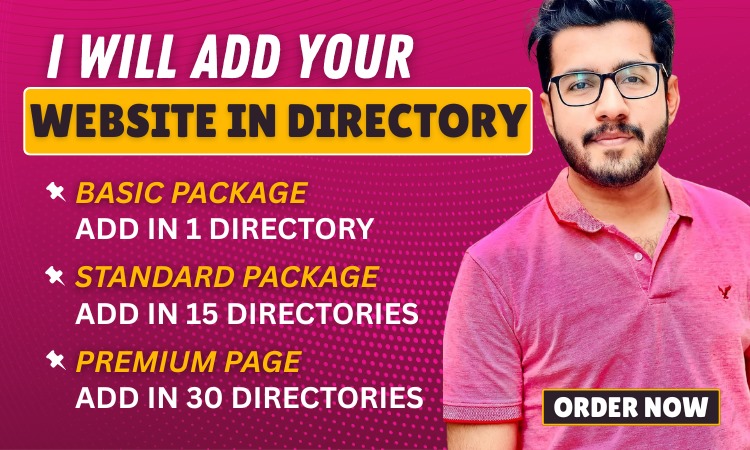Let’s face it—if your website isn’t showing up on Google, you’re missing out. SEO, short for Search Engine Optimization, is the magic that helps your site climb the rankings and get seen by the right people. But SEO isn’t just a trend—it’s a must-have strategy for every serious business, blogger, or entrepreneur in today’s digital world.
Ready to master SEO without getting lost in techy jargon? Let’s dive in.
What is SEO and Why It Matters
Understanding SEO Basics
SEO is the practice of optimizing your website to rank higher on search engine results pages (SERPs). When people search for things online, they usually don’t scroll past the first page of Google. If your site ranks well, it means more visibility, more clicks, and more customers.
Why SEO is Important for Every Website
Whether you run a local shop, an online store, or a blog, SEO drives organic traffic—that’s traffic you don’t have to pay for. Unlike ads that disappear when your budget runs out, good SEO keeps delivering long-term results.
How Search Engines Work
The Role of Crawlers and Indexing
Search engines use bots (called crawlers) to scan websites and collect data. This data is stored in an index. When someone makes a search, Google looks through its index and shows the most relevant, high-quality results.
Ranking Factors that Affect SEO
Search engines use hundreds of signals to rank pages, including keywords, site speed, backlinks, mobile usability, content quality, and user engagement. No single factor dominates—it’s about balance.
Types of SEO You Need to Know
On-Page SEO
This involves everything you can control on your site: keywords, meta descriptions, headers, image alt tags, internal linking, and content structure.
Off-Page SEO
These are external factors like backlinks, social signals, and online mentions. Getting quality sites to link to yours tells search engines your content is trustworthy.
Technical SEO
This ensures your site is easy for search engines to crawl and index. Think site speed, mobile-friendliness, HTTPS, XML sitemaps, and structured data.
Local SEO
Want more foot traffic to your physical store? Local SEO helps you show up in local search results using Google Business Profiles, location keywords, and local backlinks.
Keyword Research: The Foundation of SEO
What Are Keywords?
Keywords are the words or phrases people type into search engines. Good SEO starts with knowing what your audience is searching for.
How to Find the Right Keywords
Use tools like Google Keyword Planner, Ubersuggest, or Ahrefs. Focus on long-tail keywords—they have lower competition and higher intent (e.g., “best running shoes for flat feet” vs. “shoes”).
Using Keywords Naturally
Gone are the days of keyword stuffing. Use keywords naturally in titles, subheadings, URLs, meta tags, and throughout your content—but always prioritize readability.
Content is King (But Optimization is Queen)
Create High-Quality, Helpful Content
Google loves content that solves problems, answers questions, and provides value. Whether it’s blog posts, guides, product pages, or videos—make it helpful, engaging, and unique.
Optimizing Content for SEO
Use your main keyword in the title, first 100 words, and at least one subheading. Add LSI (related) keywords, bullet points, visuals, and clear formatting.
Keep Your Content Fresh
Update outdated blog posts, add new insights, and keep your content current. Fresh content signals relevance to search engines.
On-Page SEO Checklist
1. Title Tag Optimization
Include your target keyword and keep it under 60 characters. This is what shows on Google’s results page.
2. Meta Description
A compelling, 150–160 character description can improve your click-through rate (CTR). Mention the keyword naturally.
3. Header Tags (H1-H4)
Organize your content with headers. Use only one H1 (the title), then H2s and H3s to structure sections.
4. Image Optimization
Compress images for faster load times. Use descriptive alt tags with relevant keywords.
5. Internal Linking
Link to related posts or product pages on your site. It helps users and spreads SEO value.
6. URL Structure
Keep URLs short, readable, and keyword-rich (e.g., yourdomain.com/seo-tips).
Off-Page SEO Tactics That Work
Build Quality Backlinks
Backlinks from authoritative websites are a major ranking factor. Earn them by guest posting, creating shareable content, and building relationships with industry influencers.
Social Media Signals
While not a direct ranking factor, strong social engagement can lead to more shares, backlinks, and brand visibility.
Online Reviews and Mentions
Encourage satisfied customers to leave reviews on Google, Yelp, or niche platforms. Positive mentions help build trust.
Technical SEO Tips
Improve Site Speed
A slow website is an SEO killer. Compress images, use caching, and choose fast hosting.
Make Your Site Mobile-Friendly
Most searches happen on phones. Use responsive design so your site looks and works great on any device.
Use HTTPS
Security matters. An SSL certificate protects your site and is a Google ranking signal.
Fix Broken Links and Errors
Use tools like Screaming Frog or SEMrush to find and fix 404 errors, broken links, and crawl issues.
Add Schema Markup
Schema (structured data) helps search engines understand your content. It can add rich results like star ratings, FAQs, and product info to your listing.
Local SEO for Small Businesses
Set Up Google Business Profile
Claim and optimize your Google Business Profile with accurate NAP (name, address, phone), business hours, and categories.
Get Local Citations
List your business on directories like Yelp, Yellow Pages, and niche sites. Consistency is key.
Collect Local Reviews
Ask happy customers for reviews. Respond to them professionally to show you care.
Mobile SEO Best Practices
Why Mobile SEO Matters
Google uses mobile-first indexing, meaning it primarily looks at your mobile site for ranking. Your mobile experience must be top-notch.
Design for Thumb Scrolling
Big buttons, short forms, and fast loading = happy mobile users.
Avoid Pop-Up Overload
Intrusive pop-ups hurt user experience—and your rankings.
Measuring SEO Success
Use Google Analytics and Search Console
Track visitors, traffic sources, bounce rates, and more. These free tools are essential for understanding what’s working.
Track Keyword Rankings
Use tools like SEMrush, Ahrefs, or Moz to see how your keywords are performing.
Watch for Organic Traffic Growth
Organic traffic is the best indicator of SEO success. Over time, it should steadily increase if your strategy is working.
SEO Myths to Ignore
Myth 1: SEO is a One-Time Task
Nope. SEO is ongoing. Algorithms change, competitors evolve, and fresh content matters.
Myth 2: You Need to Pay for SEO to Win
While pro help can boost results, you can still rank with consistent, smart, DIY strategies.
Myth 3: More Keywords = Better SEO
Not true. Relevance, quality, and natural placement matter more than stuffing your content.
Advanced SEO Strategies (For When You’re Ready)
Topic Clusters and Pillar Content
Group related content together and create a long-form guide as your “pillar.” It boosts authority and internal linking.
Link Building Outreach
Email relevant websites offering value (like guest posts or data) in exchange for backlinks.
Voice Search Optimization
People speak differently than they type. Optimize for questions and natural language queries (e.g., “how to fix a leaky faucet”).
The Future of SEO
AI and SEO
AI is changing search behavior. Tools like ChatGPT and Google’s SGE are transforming how people find answers.
User Experience (UX) Will Rule
Google wants users to have a great experience. Sites with fast loading, clear navigation, and valuable content will win.
Video and Visual Search
Optimize YouTube videos, use video transcripts, and explore Google Lens-friendly image SEO.
Conclusion
SEO isn’t just for big brands or tech geeks—it’s for anyone who wants their website to be seen, trusted, and clicked on. Whether you’re just starting or leveling up your digital presence, understanding the core principles of SEO will set you apart in today’s competitive online landscape.
Remember, SEO is a marathon, not a sprint. It takes time, consistency, and a willingness to learn. But once you get it right, it keeps paying dividends—day after day, year after year.
FAQs
What does SEO stand for?
SEO stands for Search Engine Optimization. It refers to strategies used to improve a website’s visibility in search engines like Google.
How long does SEO take to work?
Typically, it takes 3–6 months to start seeing noticeable results, but it depends on your niche, competition, and strategy.
Do I need to hire an SEO expert?
Not necessarily. Many small businesses and bloggers handle SEO themselves. But hiring a pro can speed up results and avoid mistakes.
Is SEO better than paid ads?
SEO brings long-term, cost-effective results. Ads bring immediate traffic, but they stop once you stop paying.
Can I do SEO for free?
Yes! You can start SEO with free tools like Google Search Console, Google Analytics, and writing quality content yourself.




